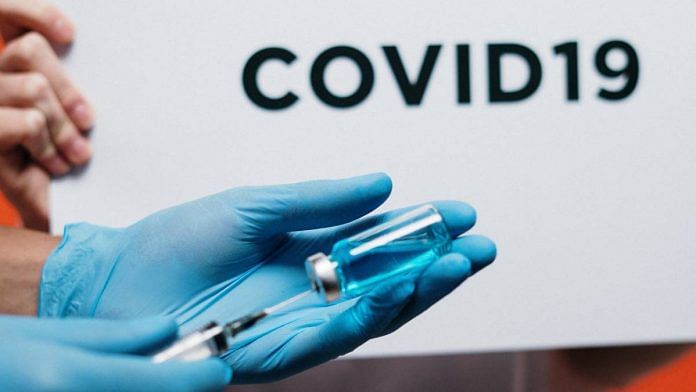New Delhi: The distribution of the Covid-19 vaccine will take place over a year, and will start with healthcare workers, followed by other groups to be added “sequentially”, the central government has told states and Union Territories (UTs) in a letter.
Dated 26 October and written by Union Health Secretary Rajesh Bhushan, the letter also notes that the government has asked states and UTs to put in place a three-tier system to oversee the rollout of the vaccine and address any hiccups, including rumours.
Among other things, the committees will coordinate work on updating the database of health workers — the Covid-19 Vaccination Beneficiary Management system (CVBMS) — that the government seeks to create to ensure smooth administration of the vaccine.
The three tiers will comprise a state steering committee, headed by the chief secretary, a state task force, headed by the principal secretary (health), and a district task force, led by the district magistrate. The committees should meet at a minimum frequency of once a month, once a fortnight, and once a week, respectively, the letter adds.
The letter is accompanied by an annexure outlining the terms of reference for the committees. ThePrint has accessed a copy of both.
“It is anticipated that initially the supply of vaccine will be limited in view of huge demand, hence, prioritisation of socio-demographics group will be done for vaccination and subsequently other groups will be included for vaccination,” states the annexure.
“In all likelihood, the Covid-19 vaccine introduction will span over a year with multiple groups being included sequentially, starting from healthcare workers (HCWs). Therefore, it is important to create strong advisory and coordination mechanism at state and district level to guide the process of Covid-19 vaccine introduction while ensuring minimal disruption of other routine health care services, including immunisation,” it adds.
Also read: Politicisation of Covid vaccine is a good thing — it means India will get it free
Committees have their tasks cut out
The terms of reference for each committee lay down a list of activities for both the preparatory phase, which is now, and the phase that follows vaccine rollout.
For example, during the preparatory phase, the committee headed by the chief secretary will have to review issues such as cold-chain preparedness (to ensure proper transfer of vaccines), operational planning, and communication planning.
They will also have to devise strategies for state-specific challenges that may arise, in terms of geographical terrain, network connectivity, access to hard-to-reach areas etc, besides exploring the availability of corporate social responsibility (CSR) funds for vaccine-related activities. The database charge has also been entrusted to this panel.
Once the vaccine is available, the committee’s duties will include tracking social media for misinformation, ensuring active involvement of stakeholders, and undertaking regular reviews of vaccine coverage.
The preparatory-phase responsibilities of the state task force, meanwhile, include identifying “vaccinators across government and private sectors so as to minimise disruption of routine immunisation services while introducing Covid-19 vaccine”. They will also have to plan and map sessions for the vaccination of healthcare workers.
Among other things, they will have to identify human resources across departments so they can be deployed for verification of beneficiaries, crowd management, and overall coordination at session sites.
After rollout, the district task force will work on developing “robust communication planning at all levels to address rumour-mongering as well as vaccine eagerness”.
They will also have to track blocks and urban areas for adherence to timelines for various activities required for introduction of the Covid-19 vaccine, and ensure timely disbursal of funds at all levels.
Also read: Covid vaccine may be ready early 2021 but distribution to take over a year, says AIIMS director






